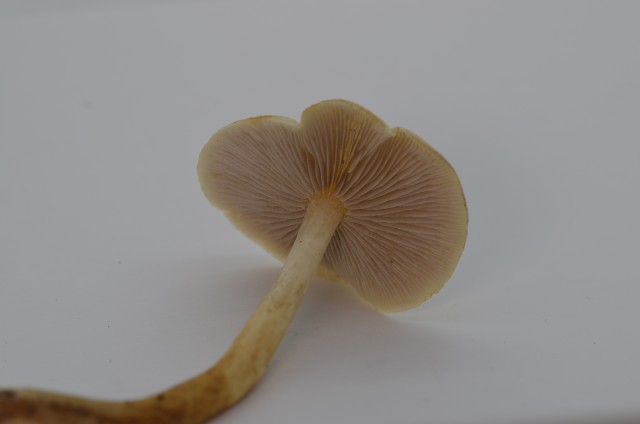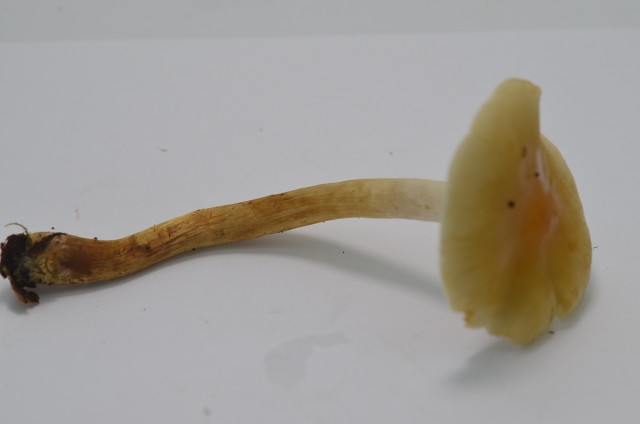Probably Hebeloma or Inocybe
found 2/2/14 in McIver park in Estacada
Dick B.: Gymnopilus usually have distinctly orangish spores
while Cortinarius spores are usually reddish brown but sometimes not so reddish.
if it was growing on wood then as Mike says Pholiota would be a reasonable guess.
Save: . Not a Cort or Gym as Dick said,
but doesn't look like Inocybe or Hebeloma either.
Additonally,
those two are mycorrhyzal, while Elmer's mushroom looks saprobic.
A couple of observations, if somebody wants to think harder:
(1) the gills are distinctly notched;
(2) the cap looks quite fibrillose in one of the photos.
The dilemma on wood or on the ground should probably be resolved with
"on the ground" because Elmer saw the mushroom in several places;
it's unlikely that that wood would be hidden in all the places.
Dick B said: I went back and looked at the pictures again and found that
25 and 27 show scurffy material near the top of the stipe
which suggest Hebeloma or Inocybe and as Sava mentioned
picture 29 shows a radially fibrillose cap surface which suggest Inocybe.
-- - scroll down for more pictures ---
The cap was white-ish.
darker in the center
Could not tell if it was growing on wood or in the duff
The gills are attached or maybe notched
There is no ring
However there may be remnants on the stipe.
Could this be a cortinarius ???
There may be some remnants of a veil on the cap edge
The spore print is light brown
Do offer some comments: Message will go to Elmer
Type your message in the box below and include your name
Click on a thumbnail to enlarge

Gy_726
|

Gy_727
|

Gy_728
|

Gy_735
|

Gy_736
|

Gy_737
|

Gy_738
|

Gy_739
|

Gy_740
|

Gy_741
|

Gy_742
|

Gy_743
|

Gy_744
|

Gy_745
|

Gy_746
|

Gy_747
|

Gy_748
|

Gy_749
|

Gy_750
|

Gy_751
|

Gy_752
|

Gy_753
|

Gy_754
|

Gy_755
|

Gy_757
|

Gy_758
|

Gy_759
|

Gy_760
|

Gy_761
|

Gy_762
|

Gy_763
|

Gy_764
|

Gy_765
|

Gy_766
|

Gy_767
|

Gy_768
|

Gy_769
|

sp_830
|

sp_831
|

sp_832
|

sp_833
|

sp_834
|

sp_835
|

sp_836
|

sp_837
|

sp_839
|

sp_840
|


